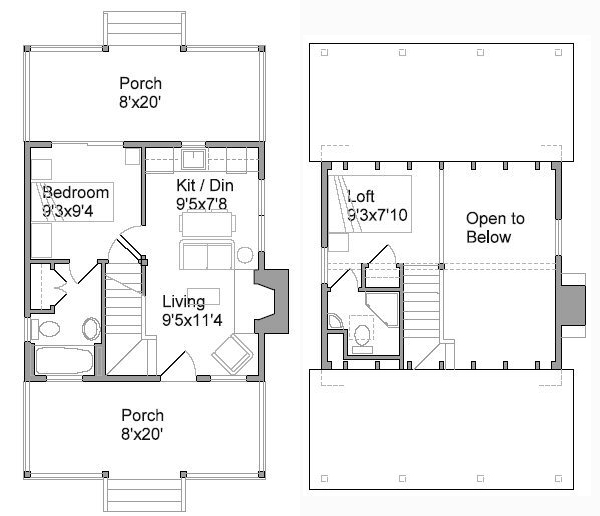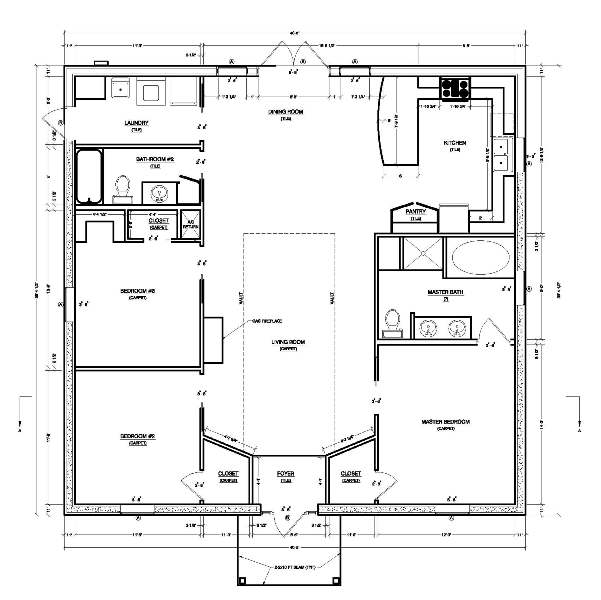Barber began designing houses in his native DeKalb, Illinois, in the late 1880s, before permanently moving his base to Knoxville, Tennessee, in 1888. His first widely-circulated catalog, Cottage Souvenir No. 2, contained designs and floor plans for fifty-nine houses, mostly in the Queen Anne style, as well as Barber's architectural philosophy and tips for homebuilders. Later catalogs contained more Colonial designs. By the time his catalog business ended in 1908, Barber had sold upwards of 20,000 plans.
Barber was born in DeKalb, Illinois, in 1854, the son of Lyman and Cornelia Barrett Barber. While still a young child, he moved to Marmaton, Kansas, where he lived on the farm of his sister, Olive, and her husband, William Barrett. By the 1870s, he owned an adjacent farm, where he raised plants which he advertised as "ornamental nursery stock." During this period, he learned architecture through mail-order books, namely George Palliser's American Cottage Homes and technical books published by A.J. Bicknell and Company. In 1884, Barber patented a nail-holding attachment for hammers.
By the mid 1880s, Barber was back in DeKalb, where he produced his first architectural designs working for his brother's construction firm, Barber and Boardman, Contractors and Builders. In 1887 or early 1888, Barber published The Cottage Souvenir, crudely produced on punched card stock and tied together with a piece of yarn, which contained 14 house plans (a revised edition published shortly afterward contained 18). The earliest buildings constructed from Barber's designs include the Charles E. Bradt House (1887) and the Congregational Church (1888), both in DeKalb. The Bradt house was featured in the March 1888 issue of Carpentry and Building.
In late 1888, Barber relocated to Knoxville, Tennessee, in hopes that the city's mountainous climate would be better for his declining health. He briefly partnered with Minnesota-born architect Martin Parmalee, but the partnership proved unsatisfactory. In 1892, he established a firm with one of his clients, J.C. White, handling the firm's business aspects. Barber also became a partner in the Edgewood Land Improvement Company, which was developing a suburb east of Knoxville known as Park City (modern Parkridge). He designed over a dozen houses for this suburb, including his own house, which still stands at 1635 Washington Avenue, and the W.O. Haworth and F.E. McArthur houses, which also still stand on Washington Avenue, and appeared in some of Barber's catalogs.
In 1890, Barber published The Cottage Souvenir No. 2, which contained 59 house plans, as well as plans for 2 barns, a chapel, a church, 2 storefronts, and several pavilions. This catalog and its subsequent revisions led to an explosion in orders for Barber's firm. Barber houses built during this period include the Jeremiah Nunan House in Jacksonville, Oregon, the Donnelly House in Mount Dora, Florida, and the J. Hawkins Hart House in Henderson, Kentucky, all of which still stand and are listed on the National Register. He also remained active on a local level in Knoxville, with the Romanesque-inspired Isaac Ziegler House on 4th Avenue, and a house built for his printer, S.B. Newman, which still stands in Old North Knoxville.
Around 1895, Barber parted ways with White and formed a new firm with a new partner, Thomas Kluttz. That year, Barber began publishing a magazine, American Homes, which advertised the firm's latest house plans, offered tips on landscaping and interior design, and published a multi-part history of architecture by Louisville architect Charles Hite-Smith. In 1896, the growing firm moved into the Barber-designed French and Roberts Building on Gay Street, with the firm's thirty draftsmen and twenty secretaries occupying an entire floor.
In the late 1890s and early 1900s, Barber designed a number of elaborate mansions for affluent businessmen, including the home of Carroll Lathrop Post (brother of C. W. Post) in Battle Creek, Michigan, the home of tobacco magnate R. J. Reynolds in Winston-Salem, North Carolina, the home of People's Bank president N.E. Graham in East Brady, Pennsylvania, and one of his grandest designs, the $40,000 "Mount Athos" for Barboursville, Virginia, tycoon Walter G. Newman. In the early 1900s, Barber began to phase out his mail-order business and with the help of his brother, Manley, focused on Knoxville-area building projects. He later worked with architects R. F. Graf and John Ryno. The publication of American Homes was moved to New York in 1902, though Barber remained a regular contributor for several years afterward. The catalog business was suspended in 1908. Barber died on February 17, 1915, and is interred with his family in Knoxville's Greenwood Cemetery. The bulk of Barber's business followed the "catalog architecture" model popularized by earlier architects such as Palliser. Barber's great innovation was his willingness to personalize his designs for individual clients at moderate cost. As he wrote in his Cottage Souvenir No. 2, "Write to us concerning any changes wanted in plans, and keep writing till you get what you want. Don't be afraid of writing too often. We are not easily offended." Though his firms' records no longer survive, it is believed that he sold as many as 20,000 plans in his career. Since he frequently modified his designs to fit his clients' needs and specifications, his houses are sometimes difficult to attribute with any certainty.
Barber was born in DeKalb, Illinois, in 1854, the son of Lyman and Cornelia Barrett Barber. While still a young child, he moved to Marmaton, Kansas, where he lived on the farm of his sister, Olive, and her husband, William Barrett. By the 1870s, he owned an adjacent farm, where he raised plants which he advertised as "ornamental nursery stock." During this period, he learned architecture through mail-order books, namely George Palliser's American Cottage Homes and technical books published by A.J. Bicknell and Company. In 1884, Barber patented a nail-holding attachment for hammers.
By the mid 1880s, Barber was back in DeKalb, where he produced his first architectural designs working for his brother's construction firm, Barber and Boardman, Contractors and Builders. In 1887 or early 1888, Barber published The Cottage Souvenir, crudely produced on punched card stock and tied together with a piece of yarn, which contained 14 house plans (a revised edition published shortly afterward contained 18). The earliest buildings constructed from Barber's designs include the Charles E. Bradt House (1887) and the Congregational Church (1888), both in DeKalb. The Bradt house was featured in the March 1888 issue of Carpentry and Building.
 House Plans Designs |  House Designs And Floor Plans |  House Planning Designs Images |  This Ted Dial home design is |  Home Designs |
 passive solar house plans, |  Home Plans and Designs Items |  sheldon-designs-tiny-house- |  house designs plans floor |  Green home design plans and |
Around 1895, Barber parted ways with White and formed a new firm with a new partner, Thomas Kluttz. That year, Barber began publishing a magazine, American Homes, which advertised the firm's latest house plans, offered tips on landscaping and interior design, and published a multi-part history of architecture by Louisville architect Charles Hite-Smith. In 1896, the growing firm moved into the Barber-designed French and Roberts Building on Gay Street, with the firm's thirty draftsmen and twenty secretaries occupying an entire floor.
 HPA Design is not a plan |  House Plans Designs |  have a home design plan. |  Affordable house designs and |  House Plans and Designs |
 small house plans, small home |  Luxury House Plans |  home plans \x26amp; house designs |  More House Designs and Plans |  Home Designs Floor Plans |

No comments:
Post a Comment